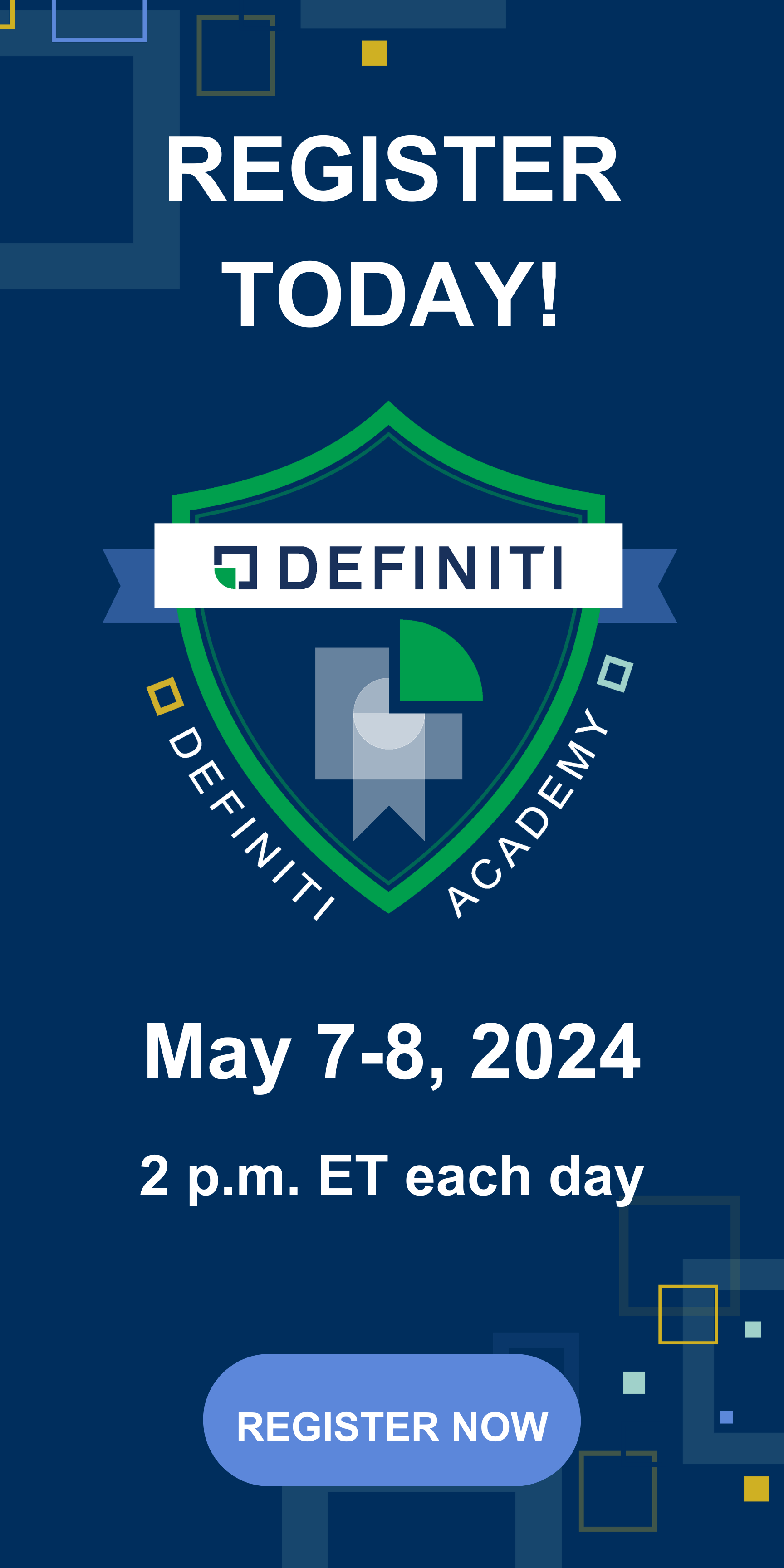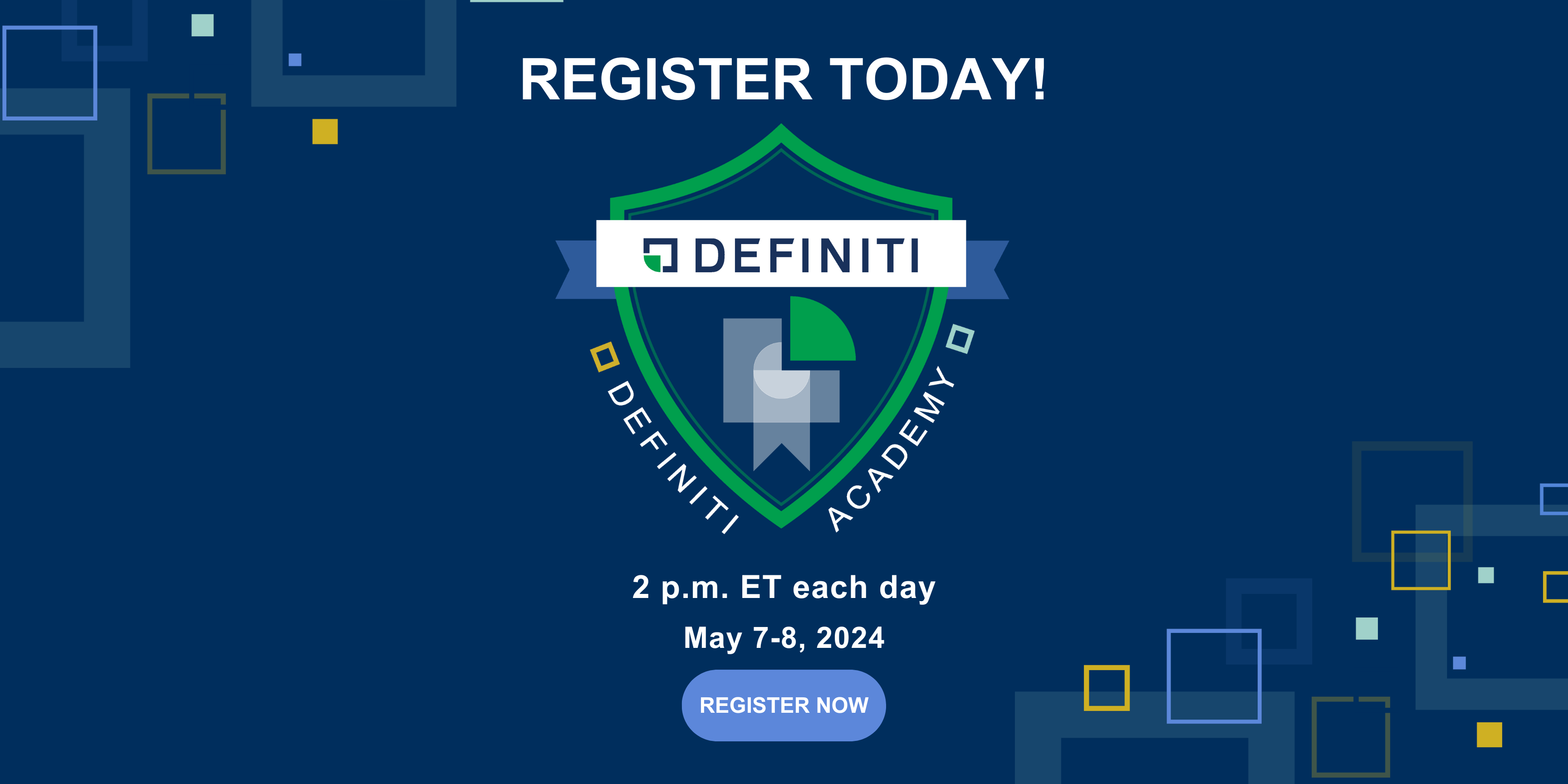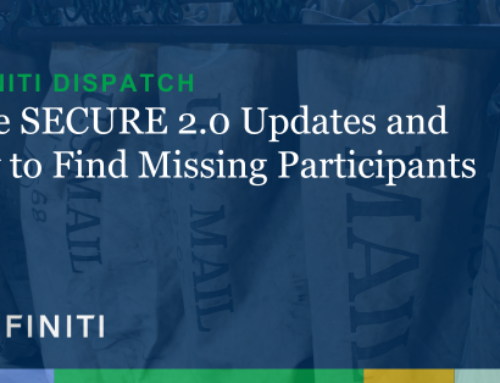VOL 12: COMPLIANCE PILOT
IRS’s 90-Day Pre-Examination Compliance Pilot Program
Recently, the Internal Revenue Service (IRS) announced a new pilot program to allow employers to conduct a self-audit of their retirement plan prior to a scheduled examination by the IRS. According to the IRS, the goal of this pilot program is to “reduce taxpayer burden and reduce the amount of time spent on retirement plan examinations.”
This pilot program has three main features:
1. Advance Notice of an Audit
Under the program, the IRS will notify a retirement plan sponsor by letter that their retirement plan has been selected for an upcoming examination. The letter gives the plan sponsor a 90-day window to review their plan document and operations to determine if they meet current tax law requirements.
Attorneys representing clients who received 90-day letters have written articles reporting that some of these letters sought information related to a particular aspect of plan administration — for example, compliance with the 415 limits or the minimum required distribution rules.
2. Opportunity to Self-Correct
During the 90-day period, the plan sponsor can correct any errors discovered, using the IRS’s voluntary compliance program, known as the Employee Plans Compliance Resolution System (EPCRS). If the plan sponsor finds errors eligible for self-correction under EPCRS, the sponsor may make the correction (or corrections) at that time, with no additional compliance fee due.
Following are errors that may be eligible for self-correction, depending on the number of participants involved and the time period they occurred:
- Failure to follow the terms of the plan
- Excluding eligible participants
- Not making contributions promised under the plan terms
- Loan failures
The plan sponsor must provide the IRS with a description and supporting documentation of any errors it found and the method it used to make the self-correction. The IRS will then review the documentation submitted by the plan sponsor and issue a closing letter (ending the examination process) or conduct either a full or limited-scope examination.
3. Reduced Fees for Correction of More Significant Errors
If the plan sponsor discovers more serious errors that are not eligible for self-correction (for example, the error impacted a significant number of participants or was a failure to update the plan document before the legally required deadline), the plan sponsor may request a closing agreement from the IRS. The closing agreement will detail the errors and the method by which the plan sponsor will correct the errors. Prior to the pilot program, if the IRS discovered significant errors during an examination, it could assess large fees and penalties. But under the pilot program, the IRS will impose lower fees for failures proactively identified by the plan sponsor during the 90-day window — generally limited to $3,500 total.
The IRS launched this initiative as a pilot program, meaning it may not become a permanent program. The announcement stated that “[a]t the end of this pilot, [the IRS] will evaluate its effectiveness and determine if it should continue to be part of our overall compliance strategy.” The announcement did not indicate how long this pilot program would last or when it would evaluate the success of the program.
This pilot program should be helpful to plan sponsors because it gives them advanced notice of an IRS exam and allows them to correct errors more cost-effectively than the IRS would permit if the errors were found during an audit. However, 90 days is a short period of time for an employer to conduct a full document and operational review. For this reason, Definiti recommends an employer act quickly if it receives a letter under this pilot program.
Proposed Rule Would Allow Self-Correction of Late Deferral Contributions and Loan Repayments
One of the most important duties of a retirement plan fiduciary is to ensure employee salary deferrals and loan repayments are contributed to the plan trust on time — generally, as soon as these amounts can be segregated from the general assets of the employer. The Department of Labor (DOL) has repeatedly stressed that ensuring employee deferrals and loan repayments are timely made to retirement plans is one of its top priorities.
According to the DOL, if a company does not deposit employee deferrals and loan repayments to the plan trust by the applicable deadline, it breaches its fiduciary duty to deposit these amounts timely and may be subject to penalties under Section 502(l) of ERISA. The employer also received an impermissible loan from the plan (a “prohibited transaction”), making the employer responsible for an excise tax under the provisions of the Internal Revenue Code.
To assist plan sponsors with correcting late contribution errors (and some other types of fiduciary errors), the DOL created the Voluntary Fiduciary Correction Program (VFCP).
Under this program, plan sponsors and fiduciaries may correct late contribution errors by taking the following steps:
- Deposit the employee deferrals and loan repayments to the plan trust immediately.
- Make an additional contribution to compensate participants for lost investment gains (“lost earnings,” i.e., the amount intended to approximate the earnings that late deferrals would have made if they were timely contributed to the plan and invested).
- File Form 5330 with the IRS and pay an excise tax.
- Report the delinquency on Form 5500.
- Submit an application and supporting documentation to the DOL for its review and approval (and wait for the DOL to review that application and issue a “no-action” letter).
In practice, however, many employers found this last step of submitting the required application and supporting documentation to the DOL to be especially burdensome. Preparing the application and assembling the required documentation can involve a fair amount of time and expense, which can be particularly hard to justify when the amounts at issue are small. Accordingly, many employers who were otherwise eligible to take advantage of VFCP declined to do so.
Recently, the DOL announced proposed updates to VFCP. The most noteworthy change is the proposed addition of a self-correction component (SCC) for qualifying employers who fail to contribute employee salary deferrals or participant loan repayments to retirement plans in a timely manner.
The proposed SCC process will be much simpler than the current VFCP application process. Instead of a multi-page application with supporting documentation, the employer need only log on to the DOL website and input the following information (the DOL will create a tool on its website for the SCC):
- Name and email address of the individual responsible for performing the self-correction process
- Plan name, plan sponsor’s employer ID number and plan number
- Amount of the delinquent contributions or loan repayments
- Amount of lost earnings (determined using a DOL online calculator)
- Date the funds were paid to the plan
- Number of participants affected by the correction
Once these items are successfully submitted, the website will issue an SCC Notice Acknowledgement and Summary Page (SCC Notice) as proof the required information was successfully provided to the DOL.
The employer is required to retain the SCC Notice, along with this additional information:
- Brief written explanation about why the amounts were contributed late
- Proof that all amounts (both the deferrals and loan repayments) and the associated lost earnings were contributed to the plan
- Penalty of perjury statements signed by the plan fiduciary and each plan official seeking relief
The employer should keep the complete documentation packet along with its other important plan documents.
Another improvement in the proposed SCC program is that the current VFCP application process allows employers to take advantage of it only once every three years. There is no such limitation under the proposed SCC process.
It is important to note that to qualify for the streamlined SCC process, the following conditions must be met:
- Participant contributions or loan repayments to the plan must be remitted no more than 180 calendar days from the date of withholding or receipt.
- Lost earnings must not exceed $1,000, calculated from the date of withholding or receipt.
- The plan or self-corrector must not be “under investigation” as defined in the program.
- Self-correctors must use the program’s online calculator to calculate lost earnings and an online web tool to complete and file the SCC Notice. Self-correctors must also complete and retain a self-correction retention record checklist, which the DOL provides as part of its guidance.
Although plan sponsors should enthusiastically welcome this new procedure, it is not currently available for use. Currently, the guidance is in the form of a DOL proposal, and the DOL is asking for public comments on it. Once the time for comments closes, the DOL will likely issue a final version of the guidance, and employers may take advantage of the streamlined SCC program at that time.
We’re Here to Help
Have questions for Definiti about the pre-examination compliance pilot program? Contact your RPC, call 1 (888) 912-3653 or email email sales@definiti.com.





